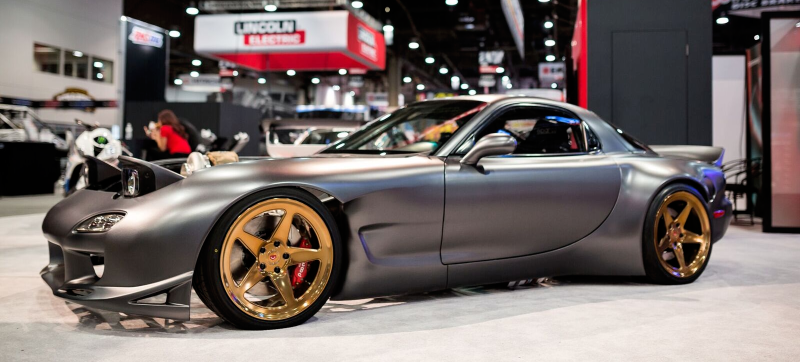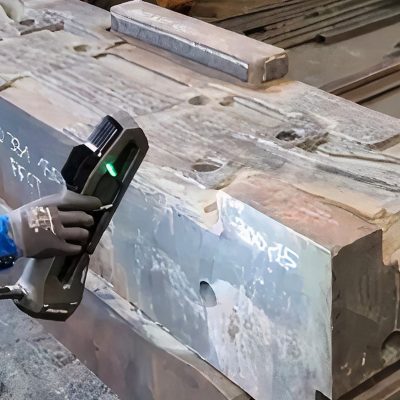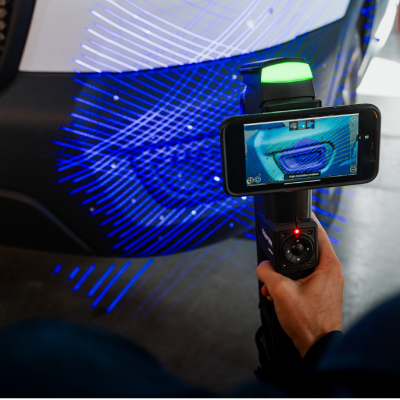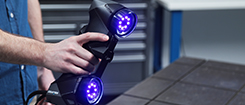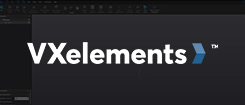April 15, 2024
Use of 3D scanner increases efficiency and reduces labor and material costs See the articleIf you’re a media-savvy custom cars enthusiast, chances are you are familiar with Rob Dahm, an automotive Youtuber with more than 395,000 subscribers to his channel. You probably also heard of his popular Project Ahura.
Among his other pet projects, Dahm has a 1990s Mazda RX-7, nicknamed Ahura, that he’s been working on for several years, pushing the limits of what individuals can achieve on custom cars. Among numerous modifications that turned the all-wheel-drive car into what experts describe as a “masterpiece of engineering,” he installed a 4-rotor rotary engine, which had never been done on a production car before.
3D Scanning the Car Body
Recently, Rob announced that, as suggested by some of his viewers, he wanted to obtain a 3D model of Project Ahura. Arrangements were made to take the car to the Creaform offices in California, to scan the body of the vintage car with the HandySCAN 3D.
As explained in the video, Rob wanted to use the 3D model for performing airflow analysis as well as aerodynamic testing, and for making carbon fiber molds for the front assembly of the vehicle.
The first thing the car fanatic explains is that the satiny dark grey color he chose for his project car was perfect to work with a 3D scanner since it is not very reflective. We are then introduced to Creaform employee Payam Haririwho who provides an interesting demo of all the steps involved in a typical 3D scanning project.
A Typical HandySCAN 3D Workflow
Before the actual scan can occur, the car is prepped by spraying a very thin white coating on the reflective or transparent surfaces, namely the windows and lights. This prevents the dispersion of the 3D scanner laser beams. Additionally, positioning targets are placed throughout the body of the car, spaced about 4 to 5 inches apart. These reflective sticker targets will help form the reference model for the scan.
Payam also briefly explains the triangulation principle behind the 3D laser scanner: a triangle is formed between each target, the HandySCAN 3D’s cameras and the laser beams that captures and precisely measures the specific positioning of each coordinate.
The quick calibration process is then shown, followed by obtaining the global reference model, in which the position of each target is captured.
Finally, the 3D scanning occurs, in which Project Ahura starts to appear in the digital world. The capabilities of the VXelements software are also demonstrated throughout the video, including its automatic adjustment for the 3D scanner laser power. Rob seems quite impressed by the whole process, deeming it “very cool that you could see the definition of the model just that quickly”. He additionally stressed how the whole experience took only about 2 hours, which is quite impressive for the complete scanning of a large object such as a car!
In the end, Rob adds that he will certainly be “doing quite a bit more with this” 3D model file that he received from Creaform.
Additional Platforms
It will be exciting to see the completed Project Ahura so make sure to tune in to Rob’s channel for updates and an upcoming final reveal. You can additionally follow Rob Dahm on Facebook and Twitter to see more on his custom cars.
Rob Dahm also documented his experience with Creaform on Instagram:
Voir cette publication sur Instagram

